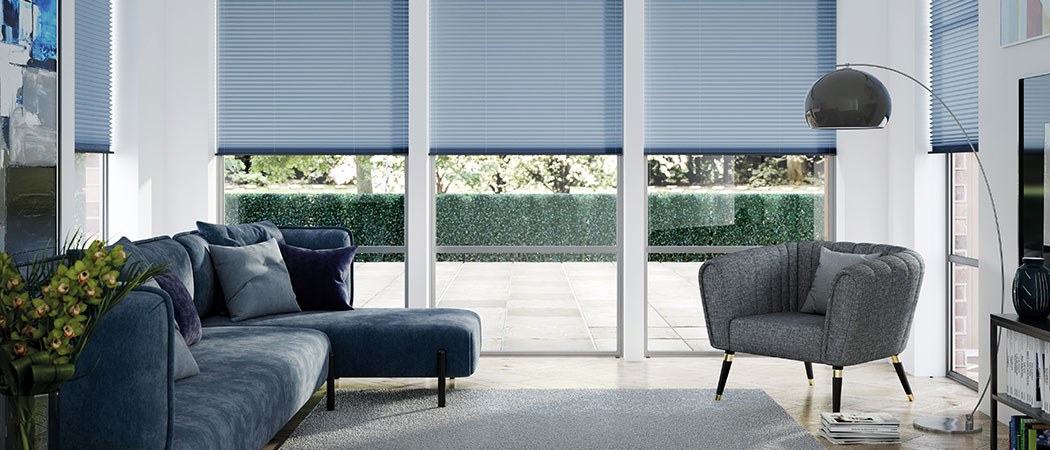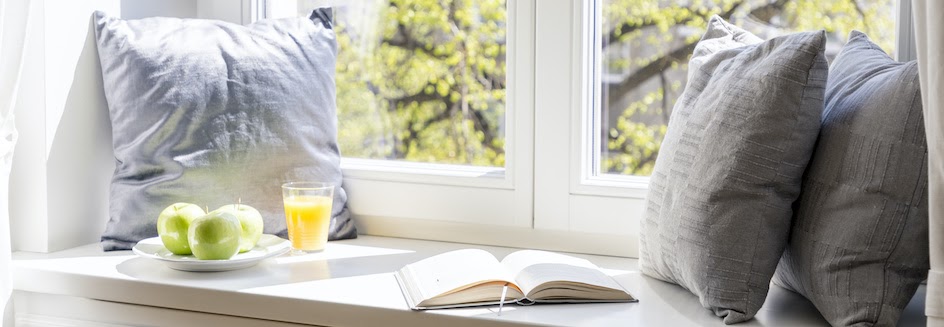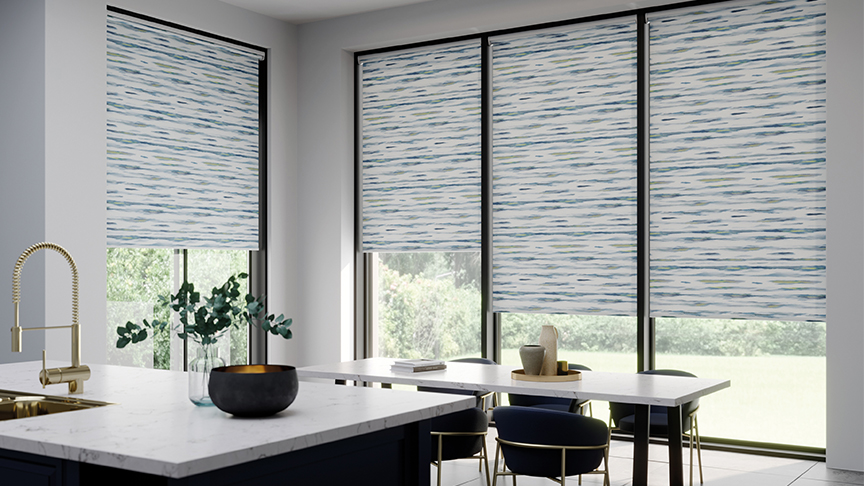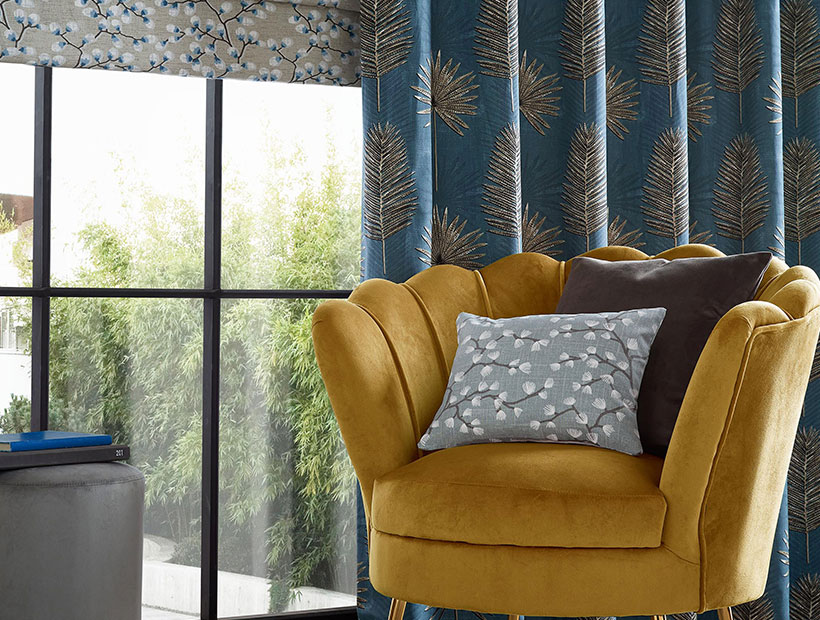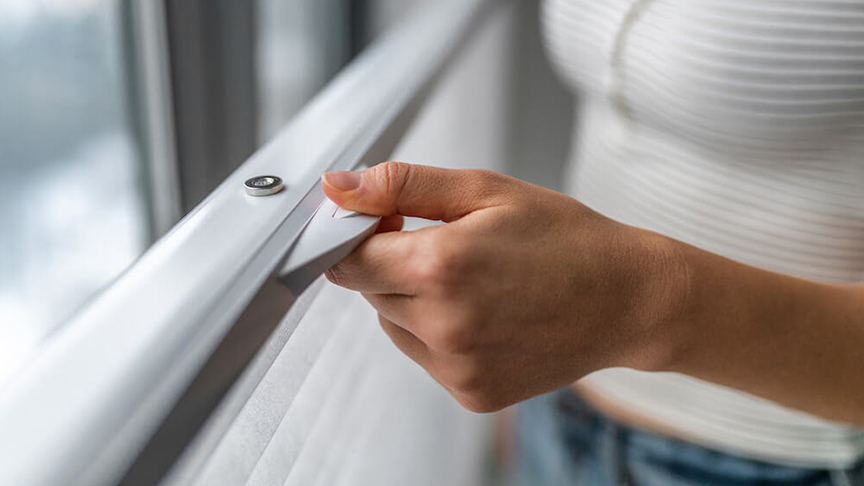Pleated blinds are made of lightweight fabric, stiffened with a thin layer of glue, and folded to create an accordion effect. You might also know them as plissé blinds or their close relative, honeycomb blinds.
Whatever you want to call them, they're not hugely popular in the United Kingdom today. However, they dominate the market throughout Europe and particularly the Scandinavian countries. So if you love Scandi décor, you should consider pleated blinds.
This article aims to unfold the mystery behind pleated blinds.
Are Pleated Blinds Good?
For our team, pleated blinds remain one of the most complicated products to sell. There are too many products to choose from!
For example, you can install pleated blinds inside and outside the window recess, on the glass, with a tensioned or free-hanging system, multiple control directions, and different ways to control them.
Even for our team of experts, pleated blinds can leave you scratching your head.
Even though they're challenging to wrap your head around, we believe pleated blinds are an excellent choice. If you sail through the sea of choice, you'll have stunning window covers.
To help you navigate your way, follow our four steps below!
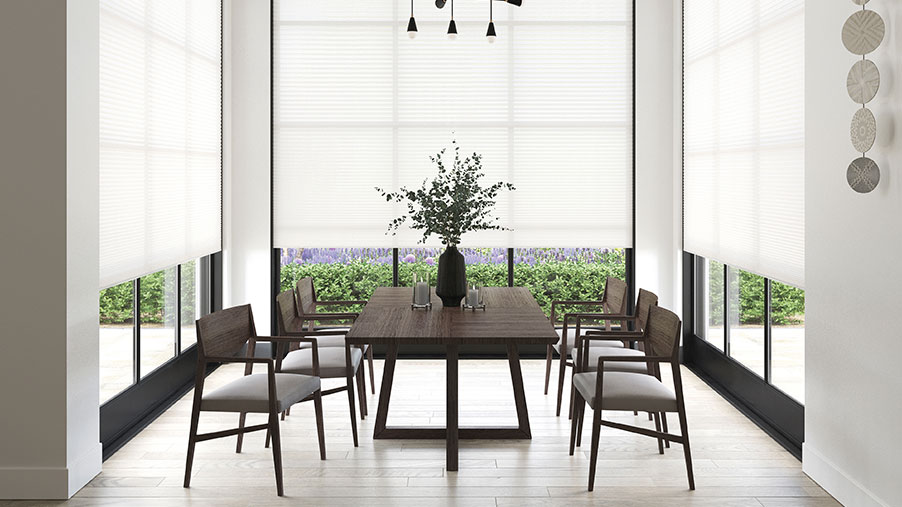
1. Fabric Type
The first decision you should make when purchasing pleated blinds is the type of pleated fabric you want.
There are two options for you to choose from:
- Single Pleat
- Honeycomb / Cellular
Single Pleat
A concertina-like pattern forms through the folds of the pleated fabric. Stiffened edges maintain their shape, even after years of life. For this reason, single pleats are by far the most popular pleated blind.
Honeycomb / Cellular
Honeycomb blinds have an iconic structure, resembling a beehive. These air pockets create an insulating barrier to keep heat in and the cold out.
Despite looking distinctly different, they are, in fact, a type of pleated blind. Thermal efficiency is the main advantage of choosing honeycomb blinds, and they perfectly complement window shutters for the best insulation.
Summary
There are two types of pleated fabric to choose from, single pleat or honeycomb. Both look great, but the cellular structure gives an added insulation boost.
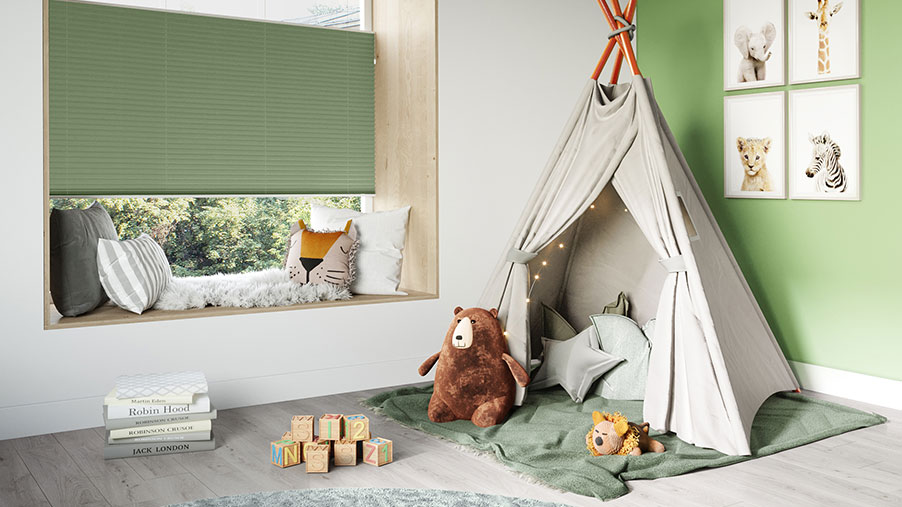
2. Control Directions
The second decision is which direction you want to control your pleated blinds.
You have three options in total, but the first two are the most popular:
- Bottom Up
- Top Down Bottom Up
- Day & Night
Bottom Up
A bottom-up pleated blind has a single control to raise the blind from the bottom upwards. We call these single controls since they can only move in one direction.
Top Down Bottom Up
A top-down, bottom-up pleated blind has two controls to raise the blind from the top down and the bottom up. We call these dual controls since they can be raised or lowered from two directions.
Day & Night
Finally, the least common choice is a day and night pleated blind. You control these blinds with a top bar, a middle bar, and a bottom bar, with two fabrics connected in the middle for maximum light control.
At the top of the blind is a dimout fabric, perfect for reducing glare in the daytime. A fixed top bar and adjustable middle bar tension the dimout fabric.
Beneath the middle bar is a blackout fabric, essential for sleep at nighttime. The middle and bottom bars are adjustable, allowing for maximum light control.
Summary
There are three systems to choose from that determine which direction the blinds will open. The simplest of these is the single-control bottom-up blinds, and the most complicated is day and night.
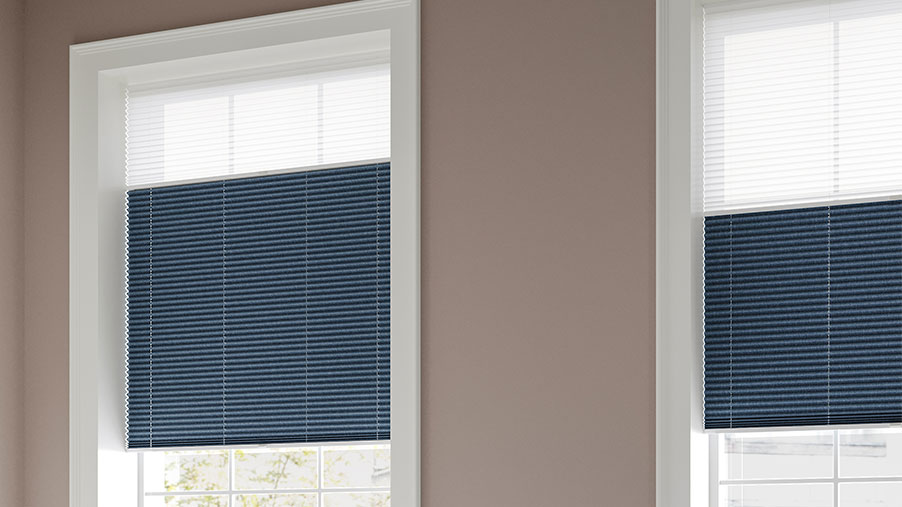
3. Installation Methods
The third choice is how you want to install your pleated blinds.
There are many different types of pleated blinds - too many. Each of them will have particular ways of installing and controlling them. However, you can categorise them into three easy-to-remember groups:
- Tensioned
- Free-hanging
- On the glazing
Tensioned
A tensioned blind uses a spring tensioning system to prevent the blind from freely moving up and down. It's possible to buy tensioned bottom-up or tensioned top-down bottom-up, but the key takeaway is it typically requires drilling.
Installation requires you to drill two holes into the ceiling and two in the windowsill; tension cables run down either side of the blind from these holes.
While we take every step to make home installation easy, we recommend hiring an expert to install tensioned systems.
Free Hanging
A free-hanging blind is like most other blinds that install by drilling into the top of a window recess or the ceiling only.
Gravity provides tension for cords that run between a top bar and a bottom bar. These cords can either run through or behind the pleated fabric.
Installation of free-hanging systems is a lot easier than tensioned systems. If you're installing the blinds yourself and not an expert, we recommend purchasing a free-hanging blind.
On the glazing
The final installation method is to install directly onto the window glazing.
Technically, the blind is still either tensioned or free hanging, but now you can skip most of the installation process to make life easier.
This option is generally the most expensive and limited by its maximum size, but it is the easiest to install.
Summary
Installation of pleated blinds is the biggest hurdle to owning them. Skip most of the challenges by installing on to the window glazing. However, this method limits the maximum size.
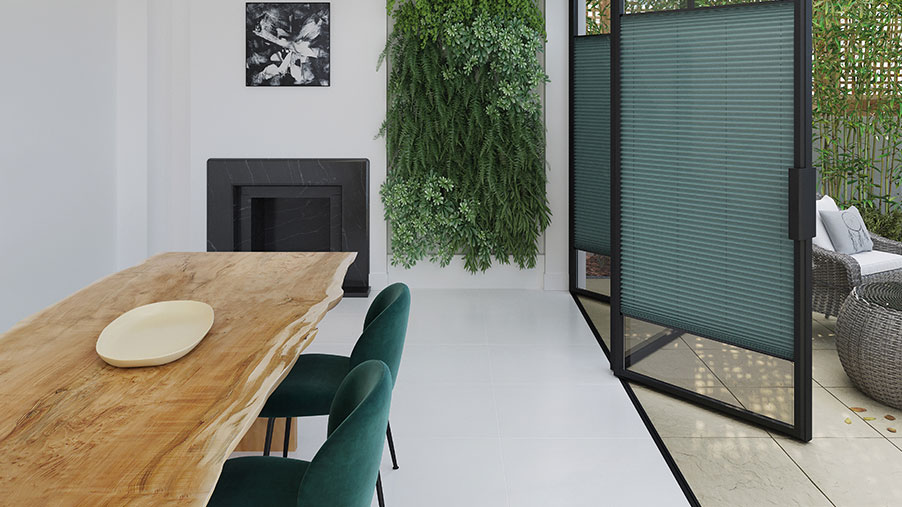
4. Control Types
Lastly, you choose how to control your pleated blind. There are four popular control types available in the market:
- Cords
- Chains
- Touch
- Electric
Touch
We've categorised tab, bar, and light bar controls as touch. With each of these controls, you push or pull the blind to its final destination.
Cords
Along with touch controls, cords are the most popular choice for pleated blinds. You firmly pull the cord toward you to activate the control and then raise or lower it to the desired height.
Chains
Perhaps the most familiar to the UK market is chain drive control. You pull the chain in one direction to lower the blind and in the opposite direction to raise it.
Electric
electric blinds, in general, are a niche market right now. However, more and more customers are ditching manual controls and switching to electric.
Summary
The most popular control types are cords or touch controls. We recommend touch controls if you have small children, although safety devices are provided with corded blinds.
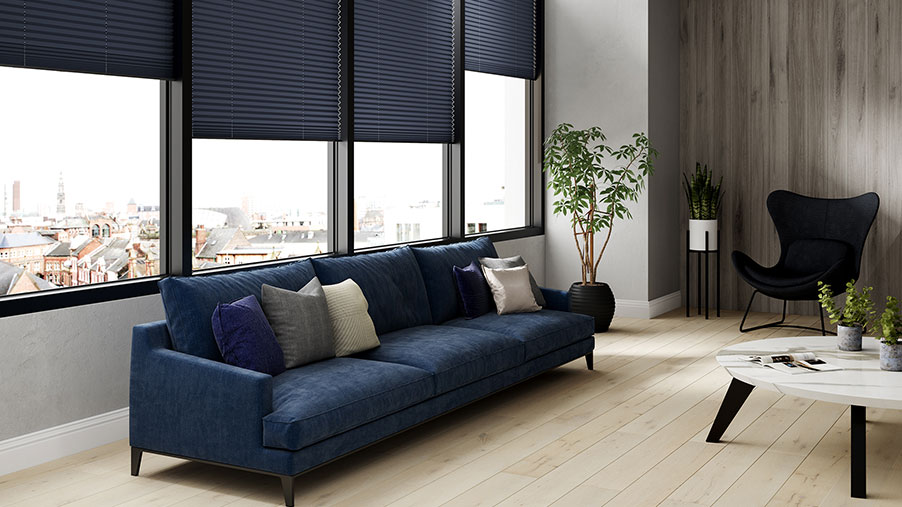
Love All Your Options
We hope you've found this article helpful. If you did, please share the love and pass this article along for others to read!

